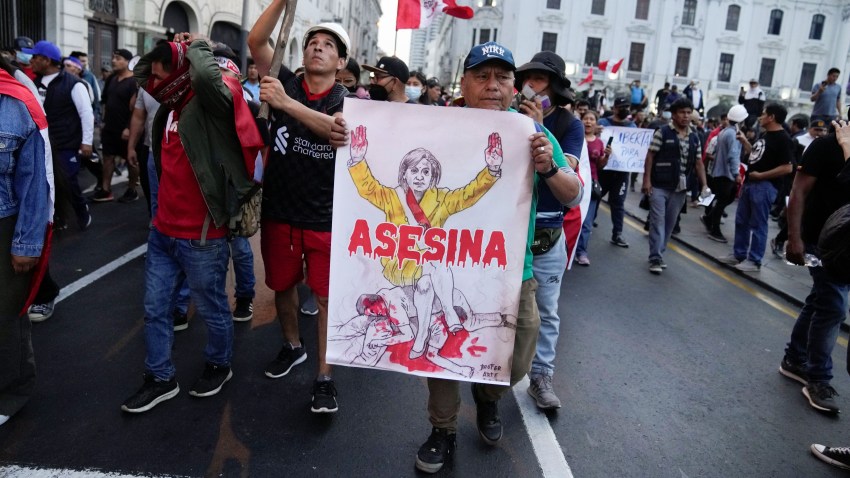In the two months since Peruvian President Dina Boluarte took office on Dec. 7, 2022, 60 people have been killed—59 civilians and one police officer—during the anti-government demonstrations that erupted across the country and continue to spread. Of the civilian deaths, 48 were reportedly shot dead by police or army officials using live ammunition, rubber bullets or tear gas bombs, often at close range. Over 1,200 civilians and 500 police officers have been injured, and hundreds more protesters have been detained, many unlawfully. Some have also reported abusive treatment at the hands of the police.
At first, the protests were a spontaneous response to the ouster of Boluarte’s predecessor, ex-President Pedro Castillo. A rural schoolteacher, farmer and a leader of the teachers’ union who had never before been elected to public office, Castillo became president after defeating three-time candidate and far-right leader Keiko Fujimori in the 2021 election by a razor thin margin. He represented the leftist Peru Libre party and promised to change the political and economic status quo to benefit the forgotten rural and Indigenous majority that voted him into office.
But Castillo’s 16 months as president were marked by confrontation with Congress, controlled by right-wing parties. Fujimori initially sought to deny Castillo’s victory immediately after the election, falsely alleging fraud. Congress tried twice to remove him from office and was in the process of initiating a third attempt on Dec. 7, when Castillo abruptly announced that he was dissolving the legislative body and would rule by emergency decree. His auto-golpe, or self-coup, failed spectacularly. Within hours, the Constitutional Tribunal declared his acts were unconstitutional; Congress voted to remove him from office; and he was arrested. His vice-president, Boluarte, was swiftly sworn in as president—Peru’s sixth in just five years.

